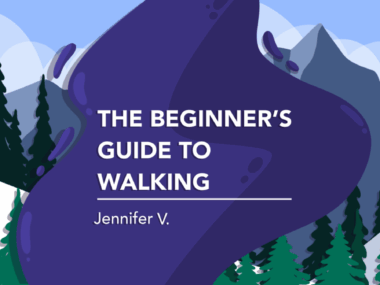Taking a leap of faith as I switch to another NMOSD treatment
Trying a different preventive medication brings many 'what-ifs'
Written by |

Note: This column describes the author’s own experiences with preventive NMOSD medications. Not everyone will have the same response to treatment. Consult your doctor before starting or stopping a therapy.
I’ve always been afraid of heights. When I’m looking over an edge, my palms get sweaty, my heart starts to race, and the world below starts to spin a little.
My daughter wanted to zip-line through the forest canopy and do a treetop trek for her birthday — and she wanted to do it with me. Who am I to decline a birthday wish? So off we went on a sunny Sunday when I found myself 20 feet in the air with nothing more than a carabiner clip keeping me safe.
Then something extraordinary happened. I thought about my week, and suddenly my fear of heights disappeared. After all, the zip line wasn’t the toughest challenge I’d faced that week — because of my neuromyelitis optica spectrum disorder (NMOSD).
The past two months have been difficult. After more than 10 years in remission, I’d been starting to feel a little invincible again. For the past four years I’ve been on one of the newest preventive NMOSD medications, which I injected monthly, and all seemed good until this May. But after I suffered two back-to-back optic neuritis attacks, followed by a third with excessive vomiting and endless hiccups, my medical team thought it was obvious that my preventive treatment just wasn’t working.
Last week I subcutaneously injected myself with that medication for the last time. My doctors believe some coverage is better than no coverage while I wait to start a new medication.
I’m disappointed that my just-completed treatment plan stopped working, and I’m also a little jealous. A few of my friends with NMOSD have had great success with the same preventive treatment I’d been taking. While I’m happy for them, there’s no joy in being the rarest of rare unicorns.
My doctors explained my current medication this way: Most NMOSD drugs are meant to interrupt the communication between my immune system and the myelin sheath it sets out to destroy. Unfortunately for me, my body has found ways to work around the drug and keep communicating.
Apparently my body is clever enough to find new ways to destroy itself. I can’t win the lottery, but I can beat medical odds like nobody’s business.
Selecting an alternative treatment plan
Last week I was deciding if I’d continue taking my chances on the treatment I’d been taking or try another drug. To make things more interesting, only three preventive options are available for me here in Canada: the one that’s not working well; the one that has properties similar to a drug I tried 15 years ago that gave me an allergic reaction; and the one option left.
There’s a lot to consider when switching treatment plans. While clinical trials help determine a medication’s safety and efficacy, no two patients are the same; there’s no guarantee that a drug will work for all of us.
There’s also the challenge of onboarding a new treatment. I’m envious of NMOSD patients who’ve been able to start a new drug without experiencing side effects, as I’ve never been one of them. Every time I’ve even adjusted my medication, my body feels fatigued, achy, and nauseous. It seems inevitable that I’ll feel horrible while starting a new immunosuppressant.
Then there are the what-ifs: What if the new medication doesn’t work? What if I still have attacks after I switch? What if this is the end, because there’s no other treatment plan left for me to try? What if the new medication works but leaves me feeling nauseous all the time?
As I stood on a small swinging log high up in the tree canopy, I told myself to just breathe. There’s very little in life I get to control, but jumping to the next log at that exact moment was something I could control. I don’t know if this new preventive medication will help me better manage my NMOSD, but there’s a possibility that it might, so I’m going to take a leap of faith and hope I land on my feet — even if I’m 20 feet in the air.
Note: Neuromyelitis News is strictly a news and information website about the disease. It does not provide medical advice, diagnosis, or treatment. This content is not intended to be a substitute for professional medical advice, diagnosis, or treatment. Always seek the advice of your physician or other qualified health providers with any questions you may have regarding a medical condition. Never disregard professional medical advice or delay in seeking it because of something you have read on this website. The opinions expressed in this column are not those of Neuromyelitis News or its parent company, Bionews, and are intended to spark discussion about issues pertaining to neuromyelitis optica spectrum disorder.







Leave a comment
Fill in the required fields to post. Your email address will not be published.